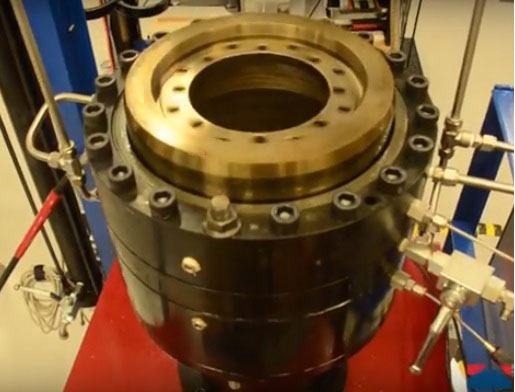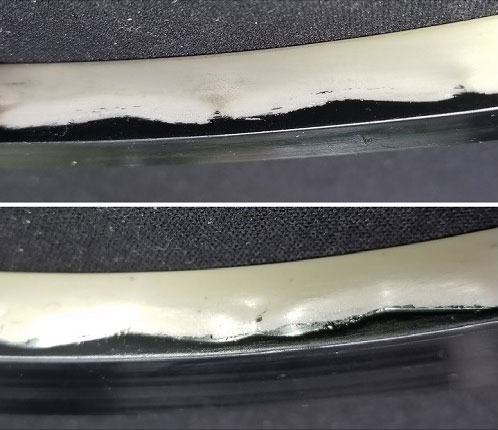Testing Plastic Lined™ RCD Seals in Non-Floating Seal Carriers

Even though the testing of RCD seals is expensive, Kalsi Engineering tests them over a range of hardware configurations and operating conditions. Such testing allows us to compare the performance of new seal and hardware configurations to older designs. Our commitment to large diameter seal testing has one goal: To help our customers achieve their high-pressure RCD objectives.
Our fixture tests two RCD seals at a time, with the pressurized seal lubricant in between. In one test series, we tested 10.49” Plastic Lined Kalsi Seals™ in conditions simulating the pressure retaining seal in a lubricant overpressure-type of RCD. In this type of assembly, the pressure of the seal lubricant is maintained at a pressure that is greater than the pressure of the drilling fluid that is contained by the RCD. The seal lubricant may also be used as the bearing lubricant.
An oil-based coolant was circulated outboard of each RCD seal at less than two gallons per minute. An RCD with circulating lubricant would have more cooling than this, and an RCD without circulating cooling would have less.
The seal carriers were of the conventional non-floating variety, and defined a radial extrusion gap clearance of 0.01” with respect to the rotating mandrel. The runout of the mandrel was 0.007” FIM at the location of the upper seal, and 0.003” FIM at the location of the lower seal.
We performed four tests at 100 rpm and 2,300 psi with an ISO 220 viscosity grade lubricant, to simulate operation with 300 psi lubricant overpressure and 2,000 psi well pressure. Each of the four tests achieved the 200-hour test duration that is invoked by API Specification 16RCD, “Specification for Rotating Control Devices”. In addition to the 2,300 psi test conditions, some of the seals were also subjected to additional operation at 1,000 and 1,500 psi.
Although RCD seals perform better when mounted in floating seal arrangements, these four tests demonstrate the still-exceptional performance that Plastic Lined Seals™ provide, even when mounted in non-floating seal housings.
Our Plastic Lined RCD seals are recommended for lubricant overpressure-type RCDs that have active pressure control systems. Because Plastic Lined Seals have high hydrodynamic pumping related leak rates with high viscosity bearing lubricants, the use of an outboard leakage collection seal is desirable, so that the leakage can be captured and returned to the lubricant reservoir.
Description of our Plastic Lined RCD Seals

Our Plastic Lined RCD seals are direct compression seals that have an elastomeric body and an extrusion resistant plastic liner. The radial compression of the elastomeric portion of the seal presses the liner against the mandrel, initiating sealing.
The plastic liner incorporates a patented wave geometry that wedges a lubricant film into the dynamic sealing interface in response to rotation of the mandrel. The plastic liner hydroplanes on the lubricant film, which minimizes wear, seal-generated heat, and temperature-related modulus loss. By minimizing modulus loss, the plastic liner is better able to resist high pressure extrusion damage.
The hydroplaning action is driven by rotation, and produces a lubricant leak rate that diminishes with increases in pressure and temperature, and diminishes with lower lubricant viscosity. When rotation ceases, the hydroplaning action and its associated leak rate also cease.
Contact us to learn more about the types of high pressure RCD seals we offer, and the best practices for implementing them into your rotary shaft seal assembly. Requests for high pressure seal quotes should be sent to the attention of Seal Sales via e-mail, or by fax at 281-240-0255.
